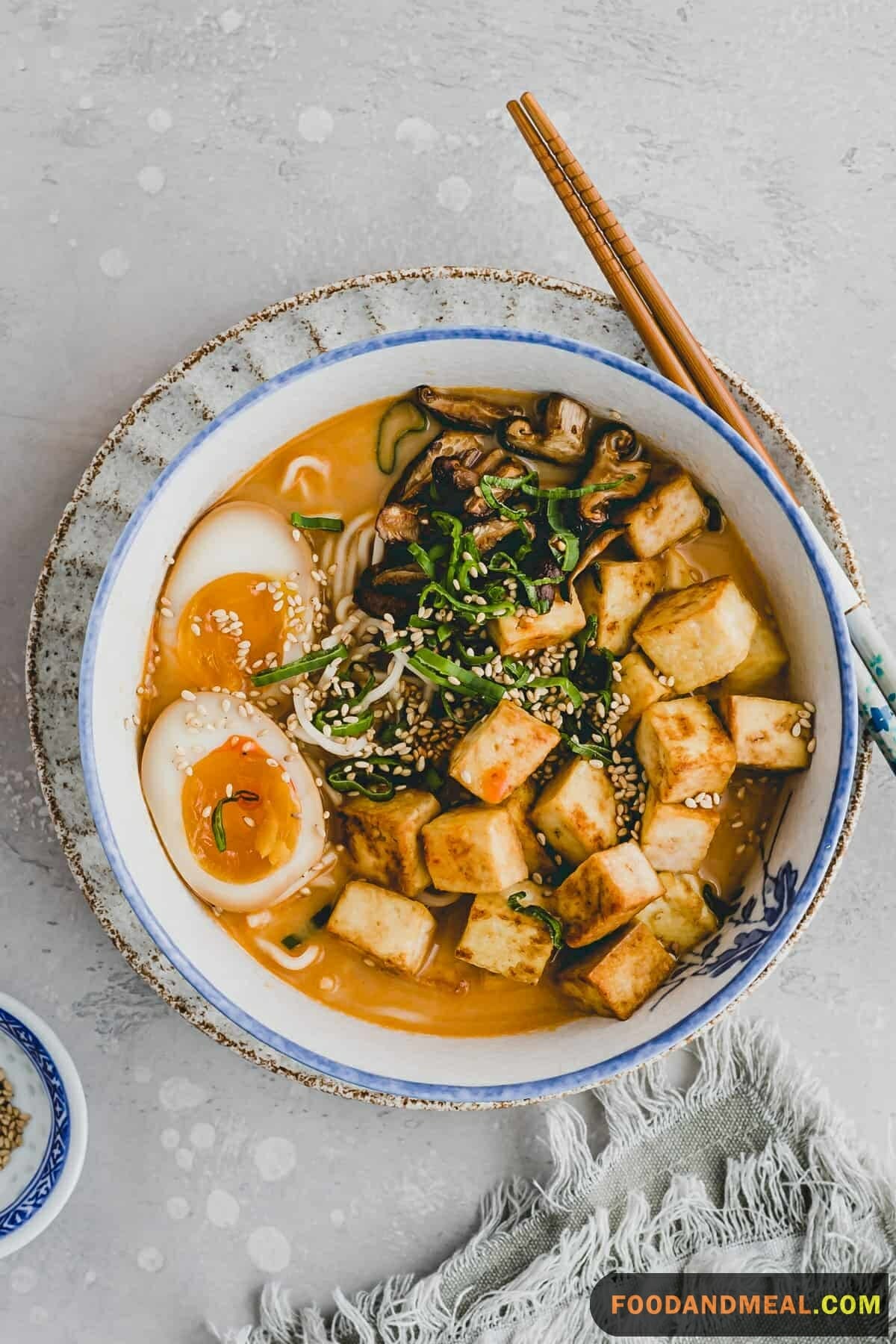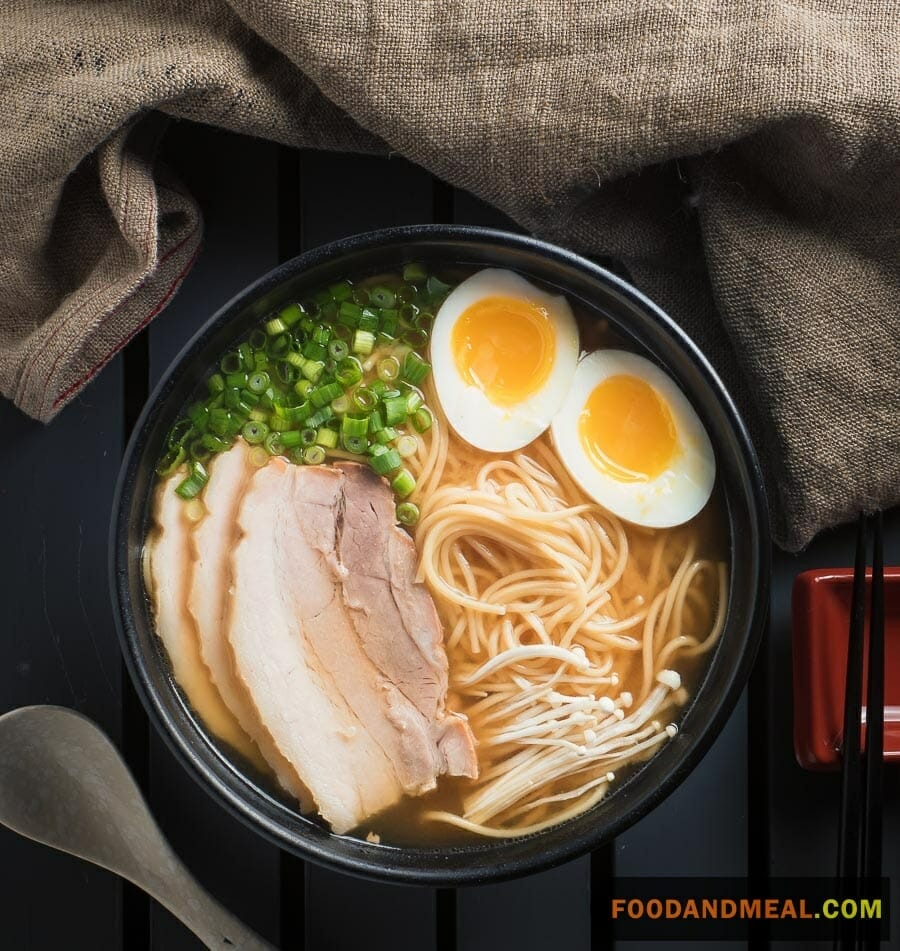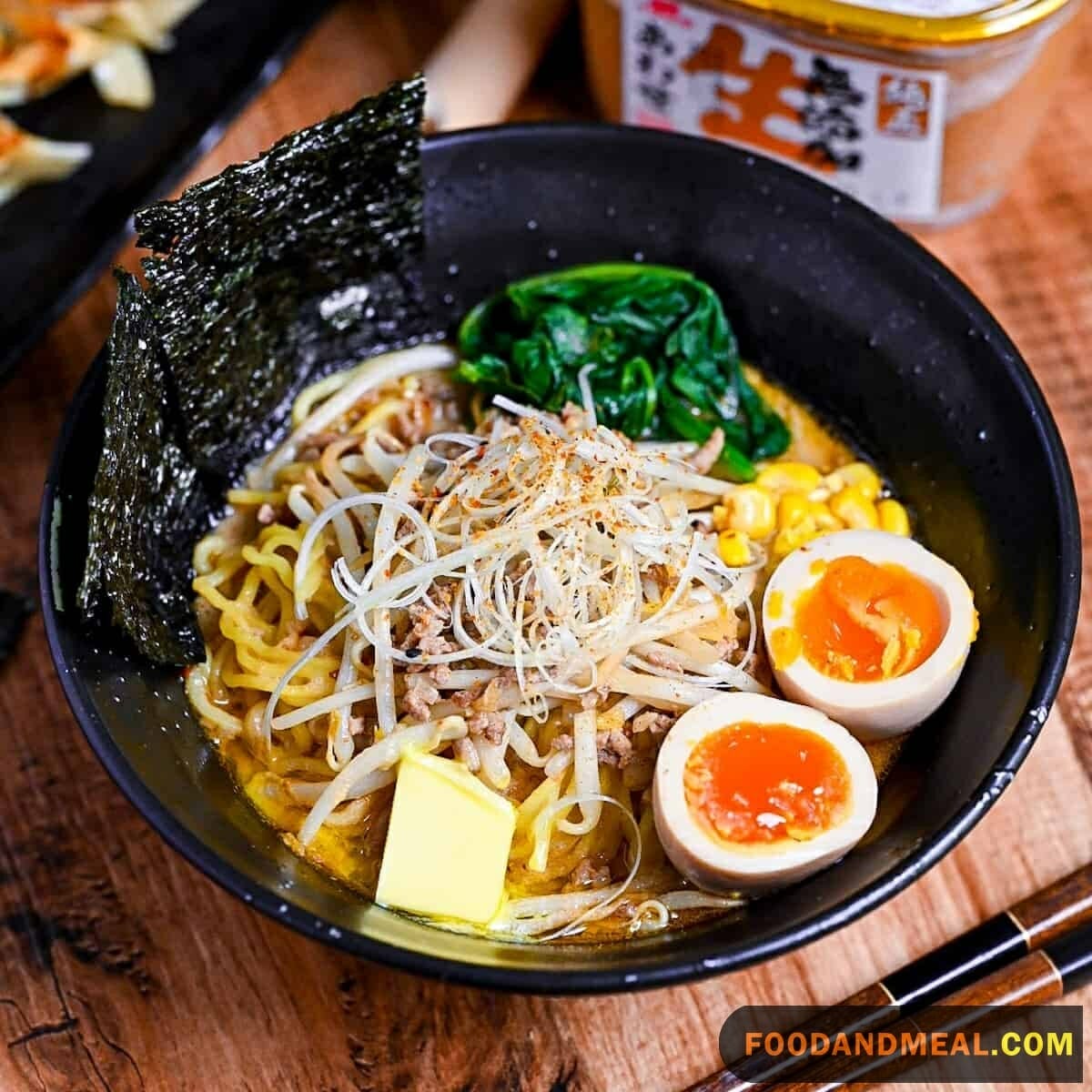When it comes to eating ramen, Miso Ramen is a popular choice in Japan. The distinctive flavor and texture of the broth makes it a delicious meal. But there are a few things that you should know before you begin your preparation. Read on to discover how to make the dish at home. It will be a great addition to your meal at home or at the office. Here are some tips to make it the best.
Japanese Miso Ramen Recipes


Miso Ramen
Equipment
Ingredients
- ¾ cup Basic Miso Tare
- 5 cups any type clear soup
- 1⅓ pounds noodles fresh, such as Chukasuimen
- 4 to 8 slices Pork Chashu
- Negi
Instructions
- With all your ingredients ready to go, bring a large pot of water to a boil over medium-high heat.
- Heat your ramen bowls by filling them halfway with hot water. The bowls don’t need to be scalding, but they should be hot to the touch. Dump out the hot water and dry the bowls with some paper towels or a clean towel.
- Put the tare and soup in a medium saucepan. Mix and bring to a simmer over low heat.
- Cook the noodles in the large pot of boiling water. Ramen that has been cut to a standard thickness (about 1 mm) will cook in 1 to 2 minutes.
- About 30 seconds before the noodles are finished cooking, ladle the soup into the ramen bowls.
- Drain the noodles, taking care to shake off as much excess water as you can. Carefully place some noodles in each bowl of soup, keeping them tidy.
- Place 1 or 2 slices of chashu and a sprinkle of negi neatly on the ramen. Serve immediately.
Video
Notes
- If miso is stored in an airtight container in the refrigerator, it can last well over a year. The flavor, though, may diminish slightly after a few months, so try not to stockpile too much of the stuff.
- Soup: Mix equal parts unseasoned low-sodium chicken broth and dashi broth.
- Noodles: Use 3 ounces of dried ramen noodles per bowl, preferably the mediumthick, curly style.
Nutrition
© Food And Meal
This website provides approximate nutrition information for convenience and as a courtesy only. Nutrition data is gathered primarily from the Spoonacular Database, whenever available, or otherwise other online calculators.
Alternative Method: Miso Ramen in an Instant Pot

Ingredients:
- 8 cups chicken or vegetable broth
- 1/3 cup white miso paste
- 3 tablespoons soy sauce
- 1 tablespoon mirin (Japanese rice wine)
- 2 cloves garlic, minced
- 1 thumb-sized piece of ginger, grated
- 1 cup sliced mushrooms (shiitake or cremini)
- 1 cup sliced bamboo shoots
- 1 cup sliced bok choy
- 1/2 cup sliced green onions
- 8 ounces ramen noodles
- 2 boiled eggs, halved (optional)
- Sesame oil and sesame seeds for garnish
Instructions:
- Begin by setting your Instant Pot to the sauté function. Add a drizzle of oil and sauté the minced garlic and grated ginger for about a minute until fragrant.
- Add the sliced mushrooms to the Instant Pot and sauté for another 2-3 minutes until they start to brown.
- In a separate bowl, whisk together the white miso paste, soy sauce, and mirin. Pour this mixture into the Instant Pot.
- Add the chicken or vegetable broth to the Instant Pot and give everything a good stir to combine.
- Close the Instant Pot lid and set it to pressure cook on high for 5 minutes.
- While the Instant Pot works its magic, cook the ramen noodles separately according to the package instructions. Drain and set aside.
- Once the pressure cooking is complete, carefully release the pressure manually.
- Open the Instant Pot and add the sliced bamboo shoots, bok choy, and green onions. Set the Instant Pot to sauté again and let the vegetables simmer in the broth for about 3-4 minutes until they’re tender.
- To serve, place a portion of cooked ramen noodles in a bowl and ladle the hot Miso Ramen broth over them.
- Garnish with a drizzle of sesame oil, a sprinkle of sesame seeds, and halved boiled eggs if desired.
Tips for making Miso Ramen

Serving Suggestions
Recommend Sides, Garnishes, and Beverages:
- Pickled Delights: Serve alongside Japanese pickles (tsukemono) to contrast the rich flavors with a burst of acidity.
- Marinated Eggs: Soft-boiled eggs marinated in soy sauce and mirin make a perfect, creamy topping.
- Sliced Nori: Crispy sheets of nori add an authentic touch and a hint of sea saltiness.
- Toasted Sesame Seeds: Sprinkle with toasted sesame seeds for added nuttiness and texture.
- Green Tea: Pair your Miso Ramen with a cup of hot green tea to cleanse the palate between bites.
Different Ways to Serve:
- Traditional Bowl: Serve your Miso Ramen in deep bowls with chopsticks and a soup spoon for the classic ramen experience.
- Ramen Party: Host a ramen party by setting out an array of toppings and letting guests customize their bowls.
- Bento-Style Lunch: Pack your Miso Ramen in a bento box with compartments for each topping, making it a fun and delicious packed lunch.
Cooking Tips

Tips and Tricks for the Best Results:
- Miso Dissolution: Whisk the miso paste into a smooth mixture with a bit of broth before adding it to the pot to prevent lumps.
- Control the Heat: Be mindful of your sauté function on the Instant Pot, ensuring you don’t overheat the garlic and ginger.
- Quick Release with Caution: When releasing the pressure manually, use a towel or oven mitt to avoid burns from the escaping steam.
Common Mistakes to Avoid:
- Overcooking Noodles: Cook the noodles separately to avoid them becoming mushy in the broth.
- Salty Miso: Taste your broth before adding extra soy sauce, as miso paste can be quite salty on its own.
- Skipping Garnishes: Don’t forget the garnishes; they elevate the dish from good to extraordinary.
FAQs about Miso Ramen

- Can I make Miso Ramen with other protein sources? Absolutely! You can add sliced pork, chicken, tofu, or even shrimp to your Miso Ramen for added protein. Cook the protein of your choice separately and add it to your bowl before ladling in the hot broth.
- Can I use other types of noodles in this recipe? Certainly. While ramen noodles are traditional, you can experiment with udon, soba, or even spaghetti noodles if that’s what you have on hand.
- How do I store leftover Miso Ramen? Store leftover broth and noodles separately in airtight containers in the refrigerator. Reheat the broth gently on the stove and cook fresh noodles when you’re ready to enjoy it again.
- Can I freeze Miso Ramen for later? While it’s possible to freeze the broth, it’s best to prepare fresh noodles when serving. Thaw the broth, reheat it gently, and cook the noodles separately.
- Is Miso Ramen gluten-free? To make Miso Ramen gluten-free, use gluten-free soy sauce and gluten-free ramen noodles. Check the labels of miso paste and other ingredients for any hidden sources of gluten.
Discover the art of crafting the perfect Miso Ramen with our expert recipe. Share the joy, relish the flavors, and subscribe for more culinary inspiration.
I'm James F Anderson, a noted sous chef from London and a Le Cordon Bleu alumnus. My career began in a Michelin-starred Parisian eatery, where my blend of classic and contemporary cooking, using seasonal ingredients, earned accolades. Recognized in culinary publications and on cooking shows, I’m committed to mentoring aspiring chefs and delivering memorable dining experiences, marking me as a standout talent in the culinary world.



